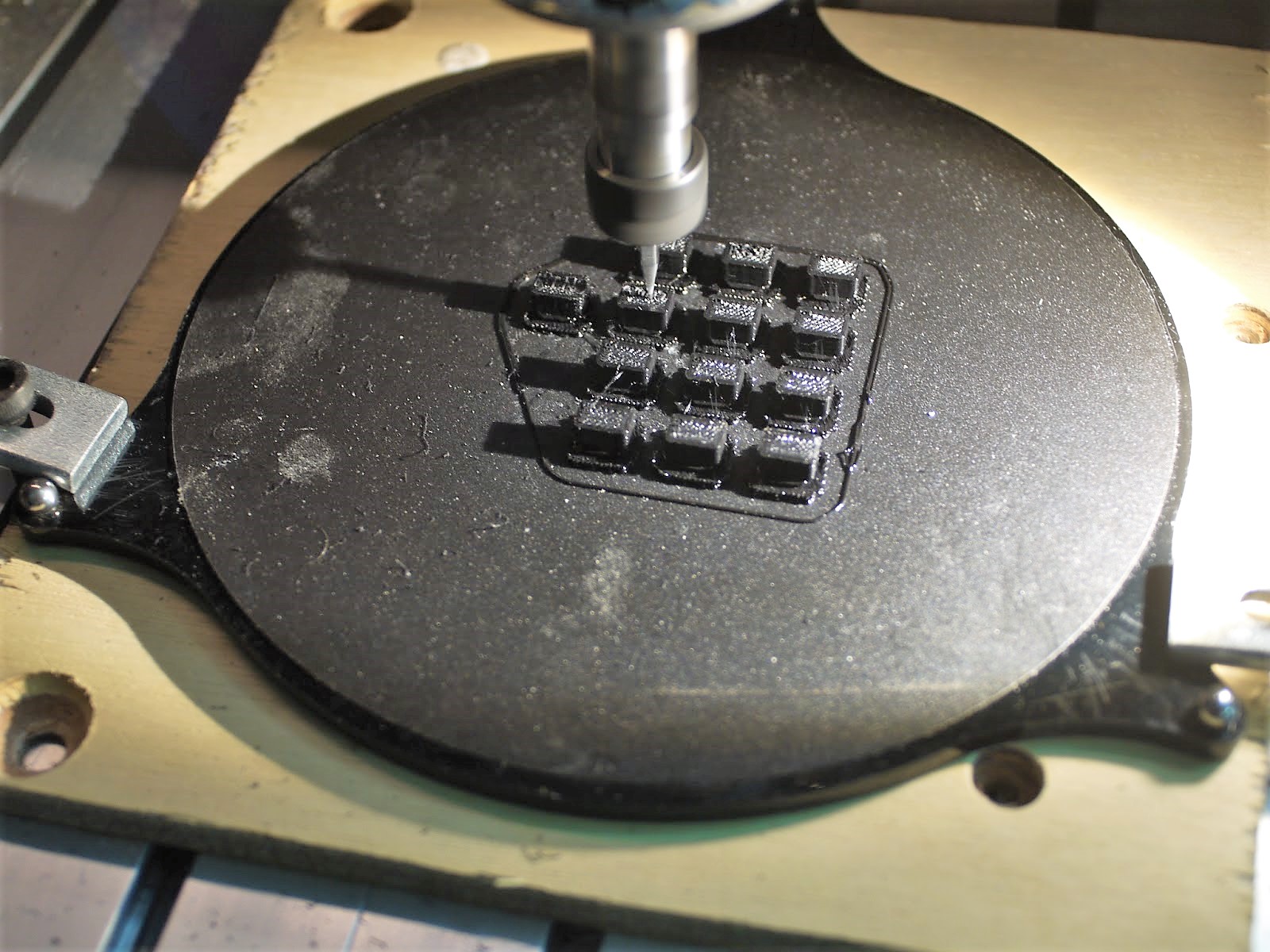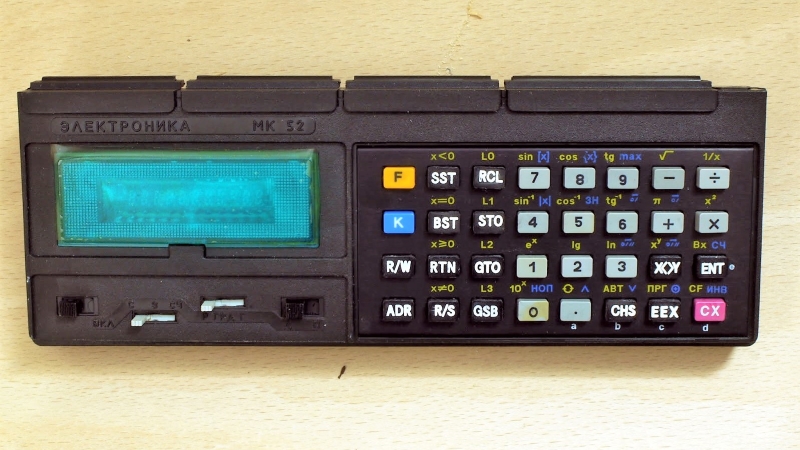Let’s be clear right up front: there are probably more obvious solutions to the problem of using a Russian calculator when you don’t speak Russian than printing new keys and engraving translated markings on them. But easy solutions are boring and generally considered beyond the scope of Hackaday articles, so let’s dive in.
 They say that mathematics is the universal language, but that’s only true to an extent. Still, even with our
They say that mathematics is the universal language, but that’s only true to an extent. Still, even with our limited non-existent Cyrillic skills, the Russian keyboard on this RPN calculator isn’t that hard to figure out. But as [Amen] points out, in the midst of fevered calculations, one prefers not to mentally translate Χ→П to STO or remember that В↑ is the Enter key. So he printed a set of replacements for the confusing keys from PLA. While pondering how to safely fixture such small parts for the later engraving step, [Amen] hit on a genius solution: move the print bed to the CNC router and fixture everything in one go. The resulting characters are large enough to be legible and deep enough to be filled with air-drying polymer clay for contrast. After sanding and polishing, the calculator looks like it came from the Министерство электронной промышленности that way.
Honestly, we’d love to get a look inside this calculator. The insides of Russian electronics can be fascinating, and we’ve even seen entire forums dedicated to decapping Russian parts. But we understand the desire to keep it intact.















Who else came over this calculators when searching for MK52a heatbeds? :-)
I’m curious whether there were any computer languages using Russian or some other language instead of English, in general use somewhere?
Does 1C:Enterprise script count?
https://i.ytimg.com/vi/7ERBHVOO6W4/maxresdefault.jpg
No, because in MOTHER RUSSIA computer programs YOU.
It was DRAKON, for example, the language used for Buran (space shuttle) program. Some enthusiast uses it today. As software, as hardware can be designed on DRAKON, and both together. It is visualized initially.
https://en.wikipedia.org/wiki/DRAKON
But this is now only cultural phenomenon, as english phrases shorter and alphabet smaller.
If some can imagine a program on chinese – for what? :)
Excel 5.0 had VBA translated to various languages, at least Finnish. In the next version (Excel 95) they figured out that translating the programming language syntax wasn’t a great idea after all. But to this day, Excel still translates all the function names in formulas.
https://en.wikipedia.org/wiki/Qalb_(programming_language)
Is it an HP clone/copy?
(the re-done keys certainly make it look that way)
I agree! My initial thought is no. The MK-52 is an (superficially HP-67-ish) MK-61 with expansion capability, but nothing like the change from the HP-67 to HP-41c. A Russian gentleman decapped MK-61 ICs to visually recover the microcode. So, one could surf to the resulting repo (code.google.com/archive/p/emu145/downloads) and compare with the HP ROM images out there to settle the question.
Nice job, if he made the keys longer he could also build a shield to put over the outside of the keys to replace the tiny bit of russian text left.
I wrote a rather boring and low budget article on the MK-52.
https://electronicsdeli.net/2021/06/23/mk52/